“Success is not final; failure is not fatal: It is the courage to continue that counts.”
— Winston S. Churchill
Introduction
Through our most recent and last flexible learning session (Week 9) this quote became the perfect embodiment of our group’s progress as our “Put Waste in Its Place” project soared, took an unexpected dive and rebounded with a brighter outlook. After receiving positive feedback from our community partners following our proposal we believed ourselves to be on track for successful project completion and were excited to present our findings to our community partners.
During the week we met with our community contacts, Paul and Ileana who introduced us to Julie LeBlanc, a project management coordinator for Solid Waste Strategic Services with City of Vancouver. This new introduction resonated particularly well with our group in the context of the Week 9 literature as it allowed us to draw parallels both to our uncertainty within an already established field, and apparent failures that have since resulted in an adjustment to the scope of our project. Firstly, Julie’s insights made us realize that a portion of our waste reduction scheme is something that goes against food safety regulations. In fact, Julie mentioned that the City of Vancouver is looking into amending this food safety regulation as part of her project within the scope of the Zero Waste 2040 initiative. With this in mind, the Freakonomics “Failure Is Your Friend” podcast highlights how to reflect on our knowledge gaps and to re-evaluate our shortcoming without a “demonized” fear of failure. Thus, this podcast has taught us that when there is an evident failure, if we fail to adjust accordingly, we will inevitably be pushing for an outcome that in the long term will be fruitless (Freakonomics, 2015). Secondly, via these new insights, we have come to appreciate Shulman’s notion that professional work is “characterized by conditions of inherent and unavoidable uncertainty” (2005). Embracing this idea, we have been able to learn from a balance of our successes and failures in completing our project and enter the final stages with a reinvigorated optimism.
Our Weekly Objectives
- Week 8 (this week): Compile our research into paragraphs
- Week 9: Edit our research for grammar, syntax, and content. Compile sticker ideas and tagline onto an informational card for restaurants.
- Week 10: Survey approximately 3 restaurants using the informational card. Record and include restaurant reactions.
- Week 11: Condense the literature review for the infographic. Design the infographic layout for the Hubbub and LFS class presentation.
Achievements
- Met with community partners. Discussed our research findings and the logistics of Hubbub 10
- Completed background and basic research for our academic literature review
- Designed and brainstormed various sticker ideas and tag-lines
- Selected and finalized the graphics of our top stickers on Adobe Illustrator and Photoshop (see below for sticker designs!)
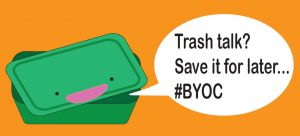

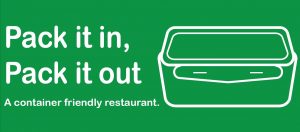
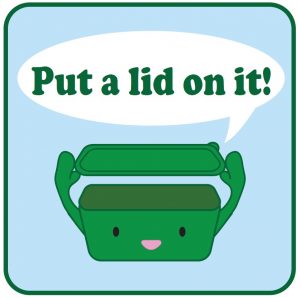


What?
Moment of Significant Change Workshop
We were introduced to the Moment of Significant Change workshop in our tutorial last week as a technique to reflect on our project milestones individually and as a group. Each of us created a graph of the amount of knowledge/skills we thought we gained and emotional states based on our project milestones. We combined our graphs into the two graphs below, showing our similar and different experiences. On our graphs, we began with our first group meeting, subsequent drafting of our terms of reference together, our first meeting with our community partners and the events following (our first blog, proposal presentation, submission, and feedback).
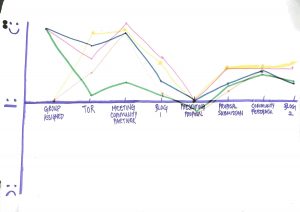
(Figure 1 – A graph combining our emotional states on each project milestone)
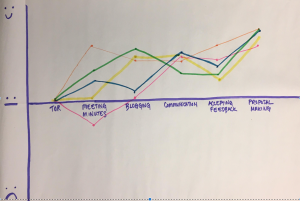
(Figure 2 – A graph combining our gain in knowledge and communication)
Combining our individual graphs to form a single graph, we noticed that our emotional states diverged the most at the beginning of the project, notably at our first meeting as a group and with our community partners. We thought our divergent emotional states were because we were uncertain and excited at the same time. Uncertain of each other and how we will proceed with our project, and excited because we were passionate about contributing to Vancouver’s 2040 Zero Waste goal.
As our project continued, we experienced a drop in excitement during our proposal presentation, which was the point where our TA helped us realised that we had different methods of meeting the project objectives. This prompted us to discuss over Skype to consolidate our methods, allowing our project to progress. During this week’s meeting we faced further feelings of uncertainty when upon meeting a new community contact, Julie Leblanc, we discovered that having restaurants pack up their patrons’ food into their own take-out containers went against food safety regulations. This led us to focus on researching methods to encourage patrons to pack their leftovers and takeout with their reusable containers, as well as designing stickers that would help to remind them to do so.
So What?
The significance of the Workshop
Through the challenges of understanding the expectations of the project, struggles of organizing content on each blog post, and anxieties of our proposal presentation, we learned that these complications derive from ambiguities. To clear up the uncertainties, we recognized the importance of listening to each other’s concerns for each assignment and tackled them one-by-one as a team, rather than accepting a satisfactory workspace. For instance, we plotted our personal “highs” and “lows” and it was an honest way of comprehending each other’s feelings and prospects to date. This was important because we were able to openly discuss why we felt differently for each event and assignment, and not only make improvements towards our delivery for tasks, but also provide mental support when it was needed. Commensurate to all relationships, the health of the group is a priority before we attempt to troubleshoot the technical problems of our work. This is because the quality of work can be influenced poorly if there are any negative behaviours within the group.
Having strengthened our group’s functional cohesiveness, we were able to readily adjust to the new information provided at the meeting and adjust our project objectives accordingly.
Moving forward, we would like to collectively praise each other’s contribution to a workpiece and use our many accomplishments as a motivator to work harder. In addition, we understand that obstacles are inevitable and only with a positive mindset will we be able to achieve our project goal effectively and efficiently.
Now what?
Groups strategy for successful project completion
For a successful completion of the “Put Waste in its Place” project, we need to continue to stay fully engaged until all our deadlines are met appropriately. We have made the necessary adjustments to the scope of our project to address restaurant patrons bringing take-out containers to restaurants for leftovers to be packaged at the table as opposed to entire meals being packaged in the food preparation area of the restaurant.
Going forward our focus will be on maintaining our current communication with our community partners, Ileana and Paul, as well as each other to help guide our work towards our scheduled timeline. Likewise, we must be mindful of our terms of references that we established as a team at the beginning of our project. It is notable that our effective teamwork and collaboration throughout this project has been well established on our terms of reference; thus, it is crucial that we respect our communication and attendance guidelines until our last presentation at Hubbub 10.
In consideration of the literature review, we will proof-read each other’s writing and providing constructive feedback. It is important that we address eachothers’ comments with respect and proactive actions. Subsequently, we will compile our most important points from our research for our infographic. Both our infographic and literature review will include our proposed solution(s); hence, as mentioned earlier, it is essential to keep in mind that project is community asset-based. Our solutions, such as our restaurant stickers, should be displayed and approached such that we are focusing on the current opportunities that our community has.
Utilizing current community opportunities include “ identifying and mobilizing existing” assets (Mathie & Cunningham, 2003). A great example of making use of existing but often forgotten community assets can be observed in the Ted Talk, “A Guerilla Gardener in South Central LA”, by Ron Finley (2013). Finley, used his neighbourhood parkway –an unused but existing asset, to grow food. Furthermore, this garden was used as a tool for education and transformation of his neighbourhood.

(HUBBUB, 2018)
As the end of term is approaching, it is important for us to remain focused on our project timeline ahead of other assignments, examinations, and commitments. In working to meet our objectives, we have clarified with our community partners of our involvement in the Hubbub project showcase and look forward to presenting our sticker idea to both our peers and other members of the community in the coming weeks.
References
Cohn, G. (2015, May 20). Failure Is Your Friend: A Freakonomics Radio Rebroadcast [Audio podcast]. Retrieved March 10, 2018, from http://freakonomics.com/
HUBBUB #10 [Digital image]. (2018). Retrieved from http://www.citystudiovancouver.com/events/hubbub-10/
Mathie, A., & Cunningham, G. (2003). From clients to citizens: Asset-based community development as a strategy for community-driven development. Development in Practice, 13(5), 474-486. 10.1080/0961452032000125857
Shulman, L. S. (2005). Pedagogies of uncertainty. Liberal Education, 91(2), 18–25. Retrieved from http://files.eric.ed.gov/fulltext/EJ697350.pdf
[Ted]. (2013, March 6). A guerilla gardener in South Central LA | Ron Finley [Video File]. Retrieved from https://www.youtube.com/